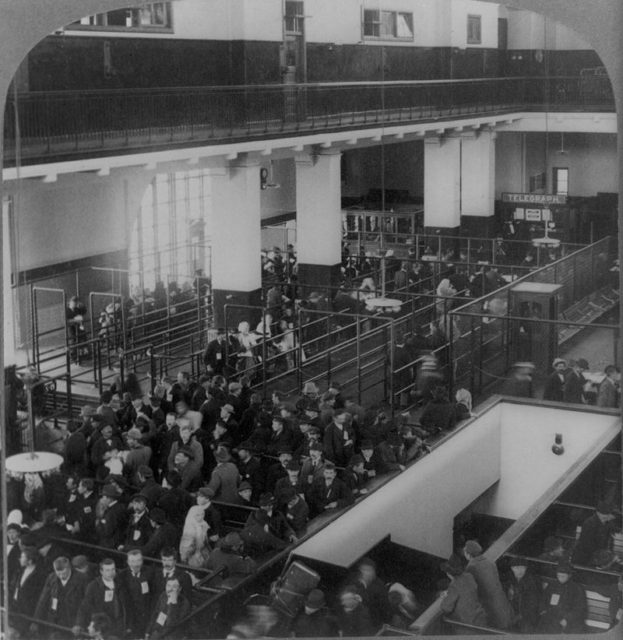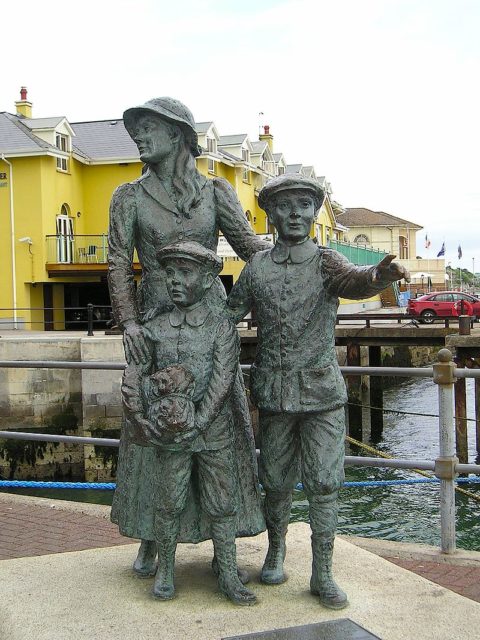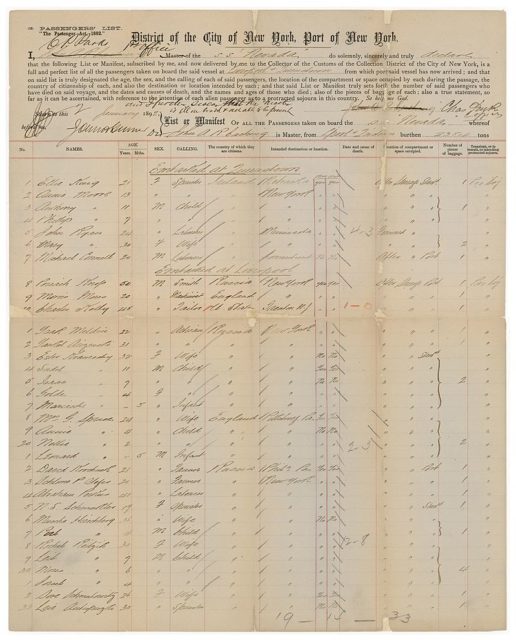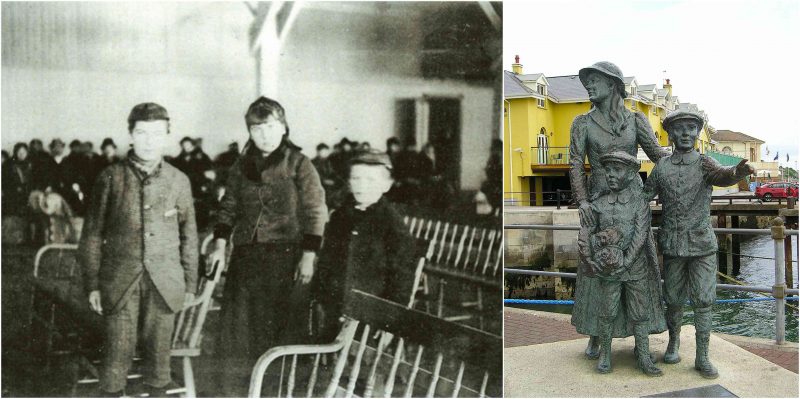Beginning in 1845 to about 1920, over four million people left their homes in Ireland to head for New York in search of a better life in America. The Great Famine, from 1845 to 1849, killed over a million Irish people and caused another million to flee to other countries.
At that time, there was no organized way for the government to document the influx of refugees that flocked to America to survive. When the immigration offices in New York were overflowing with people from other countries, it became clear that a centralized location needed to be built. In 1808, the U.S. Government purchased Ellis Island from the state of New York for use as a Naval Base. It seemed to be the most logical site for an immigration processing center, due to its location and proximity to the Statue of Liberty.


On January 1, 1892, Ellis Island opened its doors for the first time. The first immigrant to step on American soil was Annie Moore, a seventeen-year-old Irish girl who sailed across with her two younger brothers, Anthony, age fifteen and Philip, age twelve.
Annie and the boys started their journey as steerage passengers aboard the S.S. Nevada, leaving Queenstown in County Cork, Ireland, on December 20, 1891. After twelve days at sea, on the evening of December 31, the children arrived in New York; on the morning of January 1, 1892, they passed through Ellis Island.
As the first person to be processed through the new immigration station, Annie was greeted by Charles Hendley, a former official of the Treasury Department, who volunteered to register the station’s first immigrant. Annie was given a shiny $10 gold piece from former Congressman John B. Weber, the federal superintendent of immigration for the port of New York. A Catholic priest welcomed them and gave her a silver coin, a random person from the crowd also handed her a $5 gold piece.

After the ceremony, the children were reunited with their parents Matthew, a train engineer, and Julia Moore, who had come to Manhattan three years earlier to set up housekeeping and earn money for the children’s voyage.

A few years after entering the U.S., Annie married Joseph Augustus Schayer, the son of German immigrants who made his living as a salesman for Manhattan’s Fulton Fish Market. Joseph and Annie had eleven children; they raised them in an Irish neighborhood in Manhattan. They lived a life of hardship typically faced by immigrants at the turn of the 20th century in New York.
On December 6, 1924, Annie died of heart failure and was buried at Calvary Cemetery, Woodside, Queens County, New York. At first, her grave and the graves of her children were not marked. In 2008, two years after Annie’s grave was identified, a ceremony was held which celebrated the unveiling of her newly built tombstone: a Celtic Cross made of Irish Blue Limestone.
For years, an Annie Moore who died in Texas in 1924, was believed to be the same person who came through Ellis Island, but later it was discovered that the woman from Texas had been born in the United States. It was also believed for some time that January 1st was Annie’s birthday, but research proved that the story was a speculation invented by the media.

Every year, the Irish American Cultural Institute gives the Annie Moore Award to someone who has made significant contributions to the Irish people or the Irish-American community. Brendan Graham, an award-winning Irish novelist, and songwriter wrote Isle of Hope, Isle of Tears, a song to honor Annie Moore’s story.
Irish tenor Paul Linehan, a descendant of Annie’s, performed the song at the Irish America Hall of Fame in 2016. A statue of Annie and her brothers was erected at Ellis Island, as well as at the Irish port of Cobh, now Queensland, where the Moore family began their journey.
